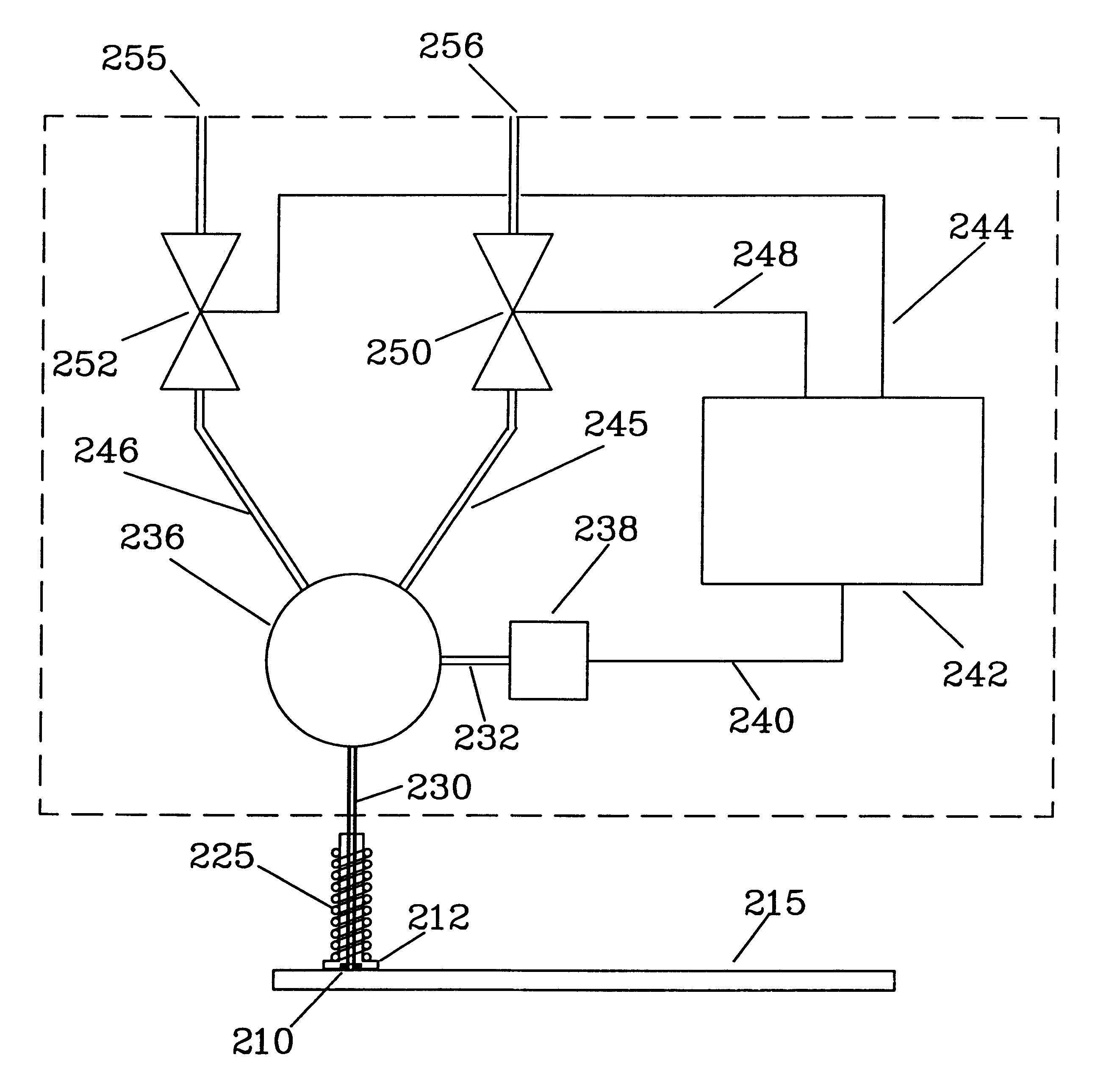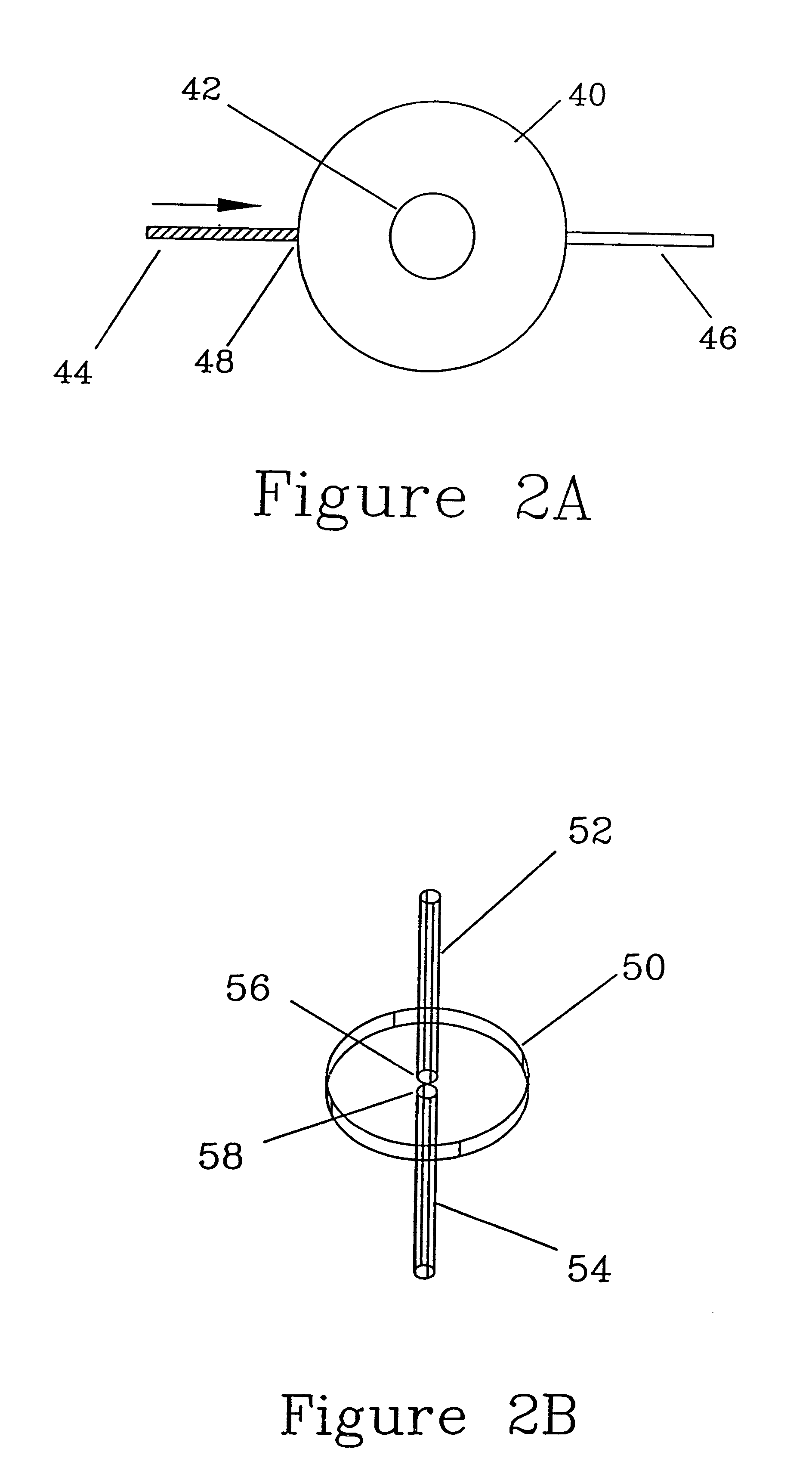Pneumatic control of formation and transport of small volume liquid samples
a technology of liquid sample and pneumatic control, which is applied in the direction of positive displacement liquid engine, laboratory glassware, instruments, etc., can solve the problems of ineffective mechanical seals, inability to accept mechanisms or processes for valving fluid volumes smaller than about a hundred nanoliters, and inability to manufacture mechanical seals. ineffective and impractical, and achieve accurate control of flow rate by this method at bes
- Summary
- Abstract
- Description
- Claims
- Application Information
AI Technical Summary
Problems solved by technology
Method used
Image
Examples
first embodiment
In FIG. 2A, the dimensions of the capillary 44 increase along one axis (normal to the axis of the capillary) at point 48, creating a barrier to motion at that point. By arresting the motion of the meniscus, small volumes can be segregated and defined. Application of a pressure sufficient to overcome the forces holding the meniscus at the gating point permits the flow of the liquid sample to resume, allowing for the delivery of known quantities of liquid to a point of use.
second embodiment
In FIG. 2B, the dimensions of the inlet capillary 52 increase along two orthogonal axes (both normal to the axis of the capillary) to form a cavity 50. A short gap separates the gating point 56 from the mouth 58 of a drain capillary 54. This gap is sufficient to arrest the movement of the meniscus unless the hydrostatic pressure in the capillary 52 is great enough to extrude the liquid into the cavity. This pressure will breach the barrier at the gating point 56 by forming a liquid bridge across the gap. As indicated by the Young-Laplace equation, the barrier to motion of a meniscus across the gap in this embodiment is approximately twice as great as the barrier of FIG. 2A (with capillaries of similar dimensions).
third embodiment
FIG. 2C is a slot 68 cut at right angles through a capillary 62 and 64 to create a gap in the capillary between points 60 and 66. By creating an expansion of the capillary in two dimensions, this gap arrests meniscus movement, but allows the formation of a liquid bridge to a drain capillary 64 when the pressure applied to the volume of liquid in the meniscus is sufficient to overcome the forces maintaining the meniscus at the gate.
PUM
 Login to View More
Login to View More Abstract
Description
Claims
Application Information
 Login to View More
Login to View More - R&D
- Intellectual Property
- Life Sciences
- Materials
- Tech Scout
- Unparalleled Data Quality
- Higher Quality Content
- 60% Fewer Hallucinations
Browse by: Latest US Patents, China's latest patents, Technical Efficacy Thesaurus, Application Domain, Technology Topic, Popular Technical Reports.
© 2025 PatSnap. All rights reserved.Legal|Privacy policy|Modern Slavery Act Transparency Statement|Sitemap|About US| Contact US: help@patsnap.com



